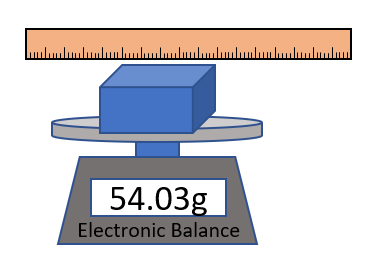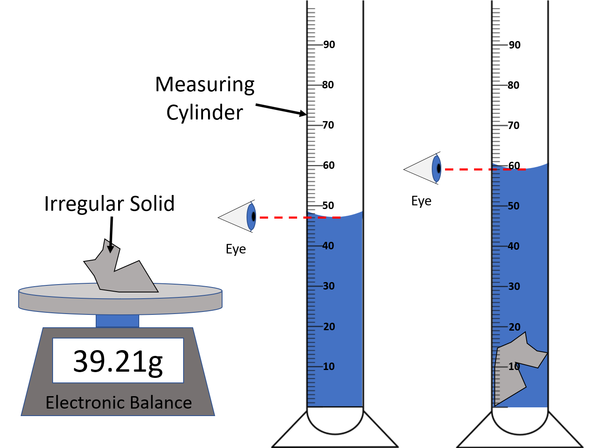Difference between revisions of "GCSE Physics Required Practical: Calculating Densities"
(→Experiment 1: Irregular Solid) |
(→Improving Accuracy) |
||
| Line 40: | Line 40: | ||
====Improving [[Accuracy]]==== | ====Improving [[Accuracy]]==== | ||
: Ensure the [[mass]] is [[measure]]d at the start of the [[experiment]] so that the [[mass]] is [[measure]]d while the [[object]] is dry. | : Ensure the [[mass]] is [[measure]]d at the start of the [[experiment]] so that the [[mass]] is [[measure]]d while the [[object]] is dry. | ||
| + | : Place the [[Electronic Balance|electronic balance]] on a flat, level surface to get an [[accurate]] reading of the [[mass]]. | ||
| + | : Place the [[Measuring Cylinder|measuring cylinder]] on a flat, level surface to get an [[accurate]] reading of the [[Volume (Space)|volume]]. | ||
====Improving [[Precision]]==== | ====Improving [[Precision]]==== | ||
: Use an [[Electronic Balance|electronic balance]] with a higher [[resolution]]. | : Use an [[Electronic Balance|electronic balance]] with a higher [[resolution]]. | ||
Revision as of 15:20, 20 March 2019
Contents
Key Stage 4
Meaning
Finding the density of solid objects.
Experiment 1: Regular Cuboid
Method
| A diagram of the apparatus used in an experiment to find the density of a regular cuboid. |
- Measure the mass of the cuboid using an electronic balance or measuring scale.
- Measure the length, width and height of the cuboid using a ruler.
- Multiply the length, width and height to calculate the volume.
- Use the equation \(\rho = \frac{m}{V}\) to calculate the density of the cuboid.
Improving Precision
- Use a ruler with a higher resolution.
- Use an electronic balance with a higher resolution.
- Use a larger cuboid to reduce the uncertainty caused by the resolution of the measuring devices.
Experiment 1: Irregular Solid
Method
| A diagram of the apparatus used in an experiment to find the density of an irregular solid. |
- Measure the mass of the object using an electronic balance or measuring scale.
- Fill a measuring cylinder with enough water to submerse the object.
- Take a reading of the volume of water in the Measuring Cylinder.
- Place the object in the Measuring Cylinder and ensure it is submersed.
- Take a reading of the volume of water + object in the Measuring Cylinder.
- Subtract the volume of water from the volume of water + object to find the volume of the object.
- Use the equation \(\rho = \frac{m}{V}\) to calculate the density of the irregular object.
Improving Accuracy
- Ensure the mass is measured at the start of the experiment so that the mass is measured while the object is dry.
- Place the electronic balance on a flat, level surface to get an accurate reading of the mass.
- Place the measuring cylinder on a flat, level surface to get an accurate reading of the volume.
Improving Precision
- Use an electronic balance with a higher resolution.

